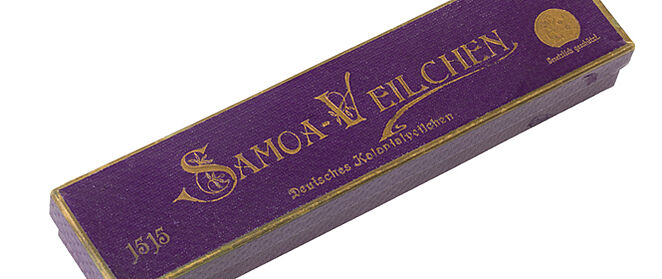'Samoa-Veilchen' packaging
n. p.; 1900/1930

The exhibition
In the exhibition ‘German Colonialism. Fragments Past and Present’, featuring more than 500 exhibits, the Deutsches Historisches Museum addresses various aspects of German colonialism for the first time. Although the German Empire was one of the major European colonial powers from 1884 until the end of the First World War, it is only in the past few years that the colonial past has increasingly begun to enter public consciousness in Germany. The exhibition offers fascinating insight into the interests, development and dynamics of German colonial history and tells of the scope of action within which a broad spectrum of German, African and Oceanian players pursued their aims and motives.
'Samoa-Veilchen' packaging
The process of anchoring the colonial project in the minds of broad segments of the population had begun early on by means of colonial exhibitions, shows displaying indigenous peoples, shops with colonial wares, magazines and colonial novels, but also existed in a longing and desire for colonies, in exoticism and in fantasies of subjugation. The package bearing the label ‘Samoa-Veilchen’ (Samoan violets) probably served to hold soap bar(s) and was sold in shops specialising in colonial wares. Wrappers for ‘colonial wares’ used images of exotic tranquillity to paint a positive picture of the division of labour in the colonies, while at the same time propagating racist stereotypes. Advertising and product design carried the motifs of colonial conquest into the private sphere of people’s homes.